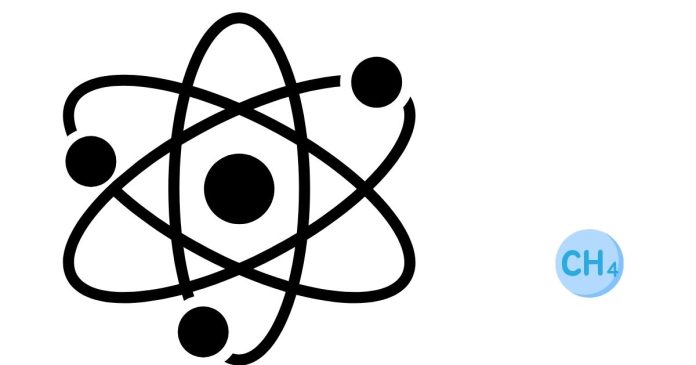In a Lewis diagram for methane (CH₄), we focus on representing the bonding and valence electrons for each atom in the molecule. Here’s how to determine the key components:
Step 1: Identify the atoms involved
- Carbon (C): The central atom in CH₄. Carbon is in Group 14 of the periodic table, meaning it has 4 valence electrons.
- Hydrogen (H): Each hydrogen atom is bonded to the carbon. Hydrogen is in Group 1 of the periodic table, meaning it has 1 valence electron.
Step 2: Draw the skeletal structure
In methane (CH₄), the carbon atom forms four single bonds with four hydrogen atoms. Carbon is the central atom, and each hydrogen is bonded to it.
Step 3: Distribute electrons
- Carbon needs 4 electrons to fill its valence shell (since it needs 8 total, following the octet rule).
- Each hydrogen needs 2 electrons to fill its valence shell (since hydrogen is stable with 2 electrons).
Step 4: Fill in the lone pairs
In the Lewis structure of methane:
- Carbon will share its 4 valence electrons with 4 hydrogen atoms, forming 4 single bonds (each bond consists of 2 electrons, one from carbon and one from hydrogen).
- Hydrogen atoms each share their single valence electron with carbon to form a bond.
Since methane is a simple molecule, all of the carbon’s valence electrons are used in bonding, and there are no lone pairs on carbon. Each hydrogen atom also has no lone pairs, as they are each involved in bonding.
Final Lewis structure of CH₄:
H
|
H - C - H
|
H
- Carbon (C) is at the center with 4 single bonds to hydrogen (H).
- Each bond represents a shared pair of electrons (2 electrons per bond).
- No lone pairs are present on either carbon or hydrogen atoms.
Key points about the Lewis structure for CH₄:
- Carbon is the central atom.
- Hydrogen atoms surround carbon, with each forming a single bond.
- Each bond involves two electrons (one from carbon, one from hydrogen).
- There are no lone pairs on carbon or hydrogen atoms.
This gives a stable structure where carbon achieves an octet, and each hydrogen has 2 electrons.


